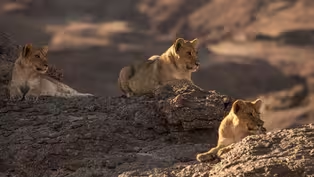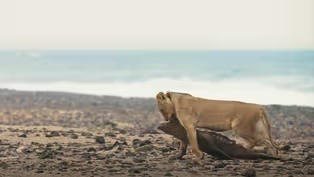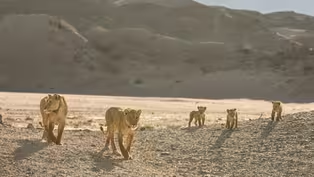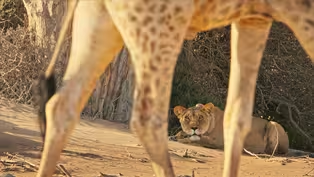
Filming Lions in the Namib Desert
Clip: Season 43 Episode 4 | 10m 38sVideo has Closed Captions
Award-winning wildlife filmmakers tell the behind-the-scenes story of “Lions of the Skeleton Coast."
Step into the untamed world of the Namib Desert with these extraordinary storytellers, whose cinematic journey spans an unparalleled eight-year desert odyssey. In "Lions of the Skeleton Coast," award-winning wildlife filmmakers Will and Lianne Steenkamp unveil the gripping saga behind their exploration.
Problems playing video? | Closed Captioning Feedback
Problems playing video? | Closed Captioning Feedback
Major support for NATURE is provided by The Arnhold Family in memory of Henry and Clarisse Arnhold, The Fairweather Foundation, Sue and Edgar Wachenheim III, Charles Rosenblum, Kathy Chiao and...

Filming Lions in the Namib Desert
Clip: Season 43 Episode 4 | 10m 38sVideo has Closed Captions
Step into the untamed world of the Namib Desert with these extraordinary storytellers, whose cinematic journey spans an unparalleled eight-year desert odyssey. In "Lions of the Skeleton Coast," award-winning wildlife filmmakers Will and Lianne Steenkamp unveil the gripping saga behind their exploration.
Problems playing video? | Closed Captioning Feedback
How to Watch Nature
Nature is available to stream on pbs.org and the free PBS App, available on iPhone, Apple TV, Android TV, Android smartphones, Amazon Fire TV, Amazon Fire Tablet, Roku, Samsung Smart TV, and Vizio.
Buy Now
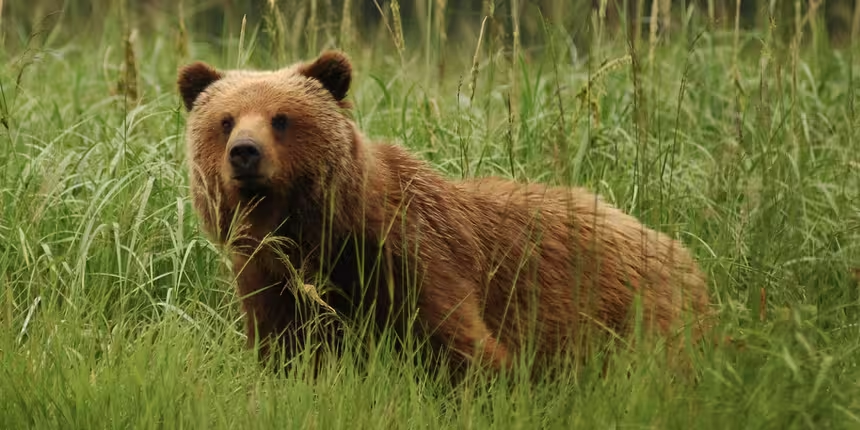
Explore More Ways to Watch
Bring the beauty and wonders of wildlife and natural history into your home with classic NATURE episodes.Providing Support for PBS.org
Learn Moreabout PBS online sponsorshipThree little cubs were born in the Namib desert, and they had such a promising future.
They were three little girls.
They were gonna stay with their mother and their aunt.
And we had a really good feeling about their future.
Until tragedy struck one day, and their mother very unexpectedly died.
And that changed everything.
For those first few weeks after their mother had died, these cubs were just sitting there.
They were just waiting for their mother.
Here you see three cubs that are really lonely.
They are desperate, and they'd stopped playing.
They didn't do anything.
And it was extremely hard to just be with them day in, day out, knowing they were waiting for someone who was never gonna come back.
And that feeling of, we are here with them, we follow them every day, but how much longer are they gonna live?
- When you follow an animal that that suffers, that's not easy.
And, and, and probably in today's day and age, the back of your mind, you think, shouldn't we help?
Shouldn't we interfere?
- You wanna do something, you wanna help them, you wanna give them a future, and yet, here you are.
And all we can do is document their story.
- This is where nature plays its own role and, and write its own script.
And one thing we've learned from Philip working with him for more than a decade is that the resilience of a lion is just unbelievable.
So you might think, oh, I need to interfere, but what if this lion will survive and become one of our biggest ambassadors for lion conservation in history?
So we had to hold onto to those thoughts and trust that something good will come out of it.
- Once the orphan sisters started walking and wandering around, they could go anywhere.
And even though there was a small collar on one of the orphans, it was just a VHF.
And Philip struggled to find them often because they would go and wanders far and wide.
And we had no idea where they'd end up.
These orphans had no knowledge of the extent of their home range.
They had no knowledge of anything.
They had no culture.
They didn't know yet how to hunt prey.
They didn't know yet where the boundaries of their home range were.
And so they could go anywhere.
And in a way that gave them a kind of freedom, but it also made it very hard to keep track of them and to follow them.
- One of the most adventurous parts of making this film over eight years was the life we lived.
It was quite an adventurous life and something we will cherish forever and ever.
Because we have to be nomads ourselves.
And in today's day and age, that cannot happen so much anymore.
Living in a vehicle with a tent on the roof and, and all the food supply and water and fuel and battery power, we can fit into the vehicle, solar-powered -- you, you start finding a way to live very lightly.
You know, you don't need so much actually.
And that was quite unique and special for us.
- We were nomadic ourselves, which was an incredible experience and an incredible way of life.
But it was also very difficult because even though the lions are collared, they go to places where we as people with our vehicles cannot go.
Because often the terrain in the desert is extremely sensitive.
And we would scare the landscape with our vehicle tracks that would stay for decades.
So even though we knew where they were, we often couldn't be with them.
And I think we were always worried that they'd end up somewhere where we could not find them again.
Especially when their aunt chased them into the dunes.
We thought, this is it.
How are we gonna be able to still follow them?
- I'm on the wrong dune.
I need to be one dune over.
But there's a settle here.
So you can come up here and then we can quickly check this.
- All right.
- We are on the wrong dune.
So Philip is just checking if there's a way to get to the next dune without getting stuck.
- We had no hope for the orphans, Philip and us.
We thought this is it.
They're gonna have a really tragic end.
And then it all turned around.
When they discovered that oasis, that was the turning point that was gonna change their lives forever.
What's truly phenomenal is that the three little sisters with no knowledge of anything figured out that this oasis - with all these wetland birds - could be the solution to their struggle.
Their starvation led them to do something is unheard of.
Once we saw that they were successful in hunting birds, we knew these girls actually have a chance.
- The only way to get the right perspective of a landscape as massive as this, we knew from the start would be aerials.
We brought in the helicopter with, with gyro-stabilized camera systems, which means that the, the camera can be quite far from, from the animal and, and not have that such a bad influence and disturbance on the animals.
That's when we start showing what the desert really looks like, giving that incredible perspective, that aerial perspective, also showing how big this place really is.
I think that was crucial part to truly reflect the world they live in.
- The most remarkable thing that happened, and it's something that Phillip has always dreamed about.
The two sisters continued going west and they went further west.
They crossed to dune belt and eventually they reached the coast.
And what happened there was unbelievable.
The skeleton coast is a really tough place.
It's a place of death.
It is very harsh, and we couldn't possibly imagine that a lion could survive along this coastline.
Yet when the two orphan sisters of am Bravo discovered this coastline, they decided to make this their home.
They discovered that at nighttime, a lot of seals would come to the shore, individual seals all stretched out along the coastline, and they would start roaming the beach and just going up and down.
And they learned to catch.
But for us, the challenge was of course, that them only coming to the coast at night, how were we gonna film this?
And it became obvious that we needed a, a nighttime camera, a thermal image camera that would have little impact on their hunting behavior.
And yet we could capture everything in detail - Here.
We've got a terrestrial predator hunting, a marine predator that excited us that that's something that drives you on, you know, that gets you through the weeks and the months of not finding them or or finding them.
And nothing's happening because we got to share something new about lions.
We got to share something that people have never seen before.
- The orphan cups rewrote desert line history.
There's no other way to put it.
They did the unthinkable.
They did the unexpected.
They did what Philip never could have predicted.
- We wanted to be the ones to, to to, to share the most incredible side of lines.
People often underestimate.
And that's the resilience that's surviving in a place like a desert where we think there's no food.
But they found food and they showed us that you can actually thrive here.
- What it's taught us is that out of the worst tragedies sometimes come the most astonishing ways of survival.
Desert Lion Cubs Hunt at Night
Video has Closed Captions
Clip: S43 Ep4 | 3m 27s | After discovering an oasis, the orphan lions develop an unusual hunting strategy. (3m 27s)
Extraordinary Lion Behavior Caught on Camera
Video has Closed Captions
Clip: S43 Ep4 | 3m 16s | Orphan cubs find their way to the beach, where they discover a new kind of prey: seals. (3m 16s)
Preview of Lions of the Skeleton Coast
Video has Closed Captions
Preview: S43 Ep4 | 30s | Follow three orphaned desert lion cubs as they navigate the brutal Skeleton Coast of Namibia. (30s)
Young Lioness Learns to Hunt Giraffes
Video has Closed Captions
Clip: S43 Ep4 | 1m 28s | As a young lioness reconnects with her aunt, she is taught how to hunt giraffes. (1m 28s)
Providing Support for PBS.org
Learn Moreabout PBS online sponsorship
- Science and Nature

Explore scientific discoveries on television's most acclaimed science documentary series.

- Science and Nature

Follow lions, leopards and cheetahs day and night In Botswana’s wild Okavango Delta.












Support for PBS provided by:
Major support for NATURE is provided by The Arnhold Family in memory of Henry and Clarisse Arnhold, The Fairweather Foundation, Sue and Edgar Wachenheim III, Charles Rosenblum, Kathy Chiao and...
